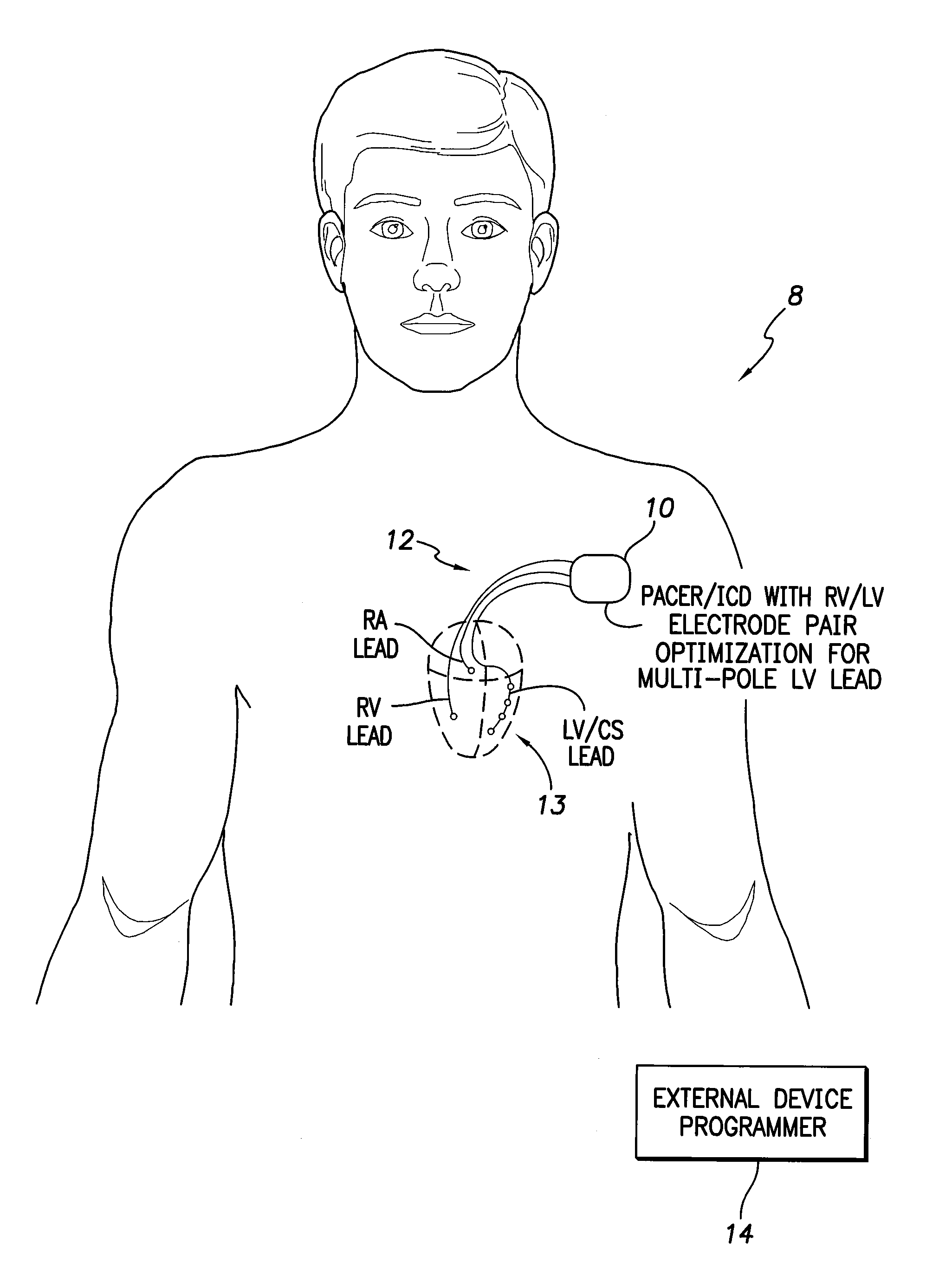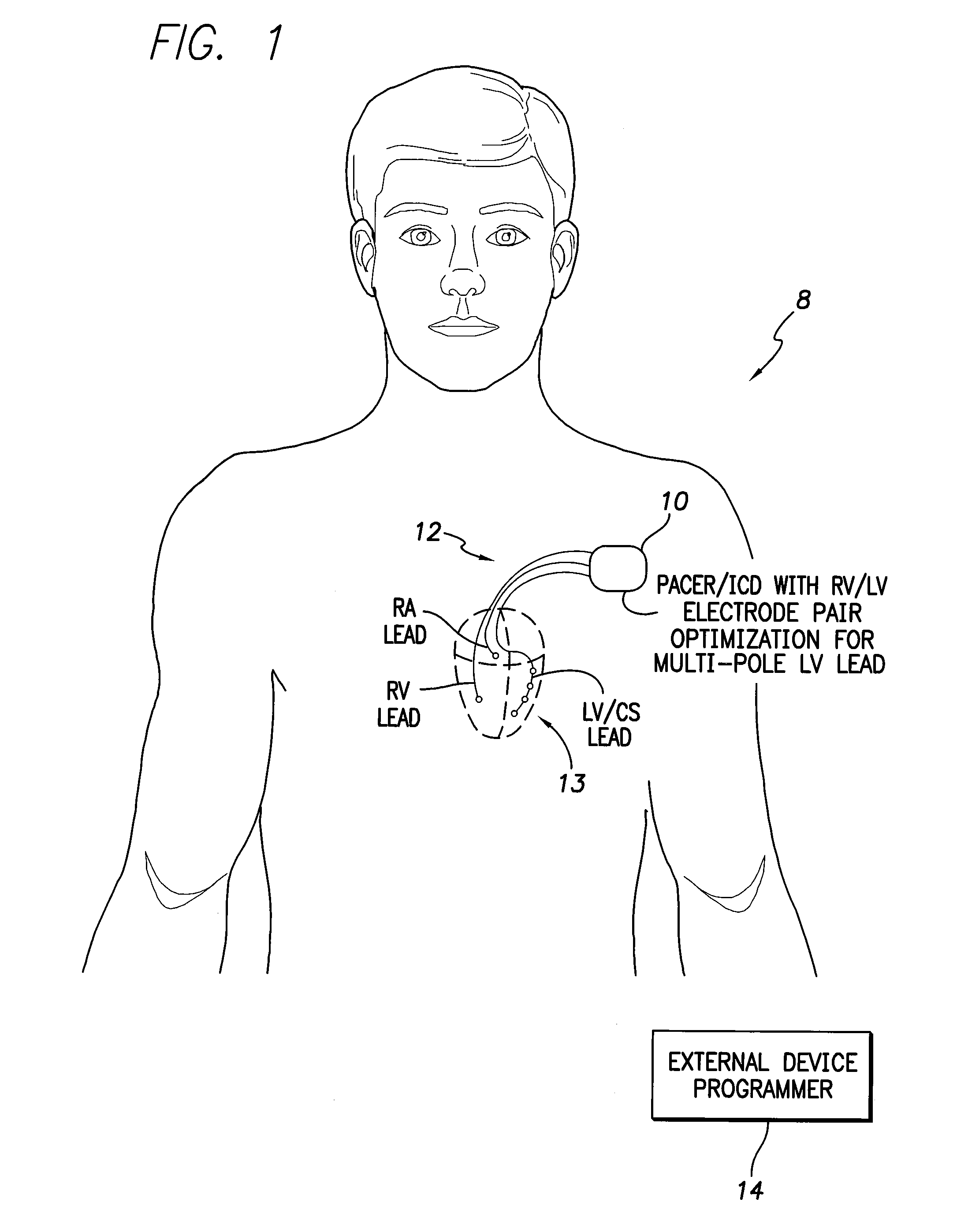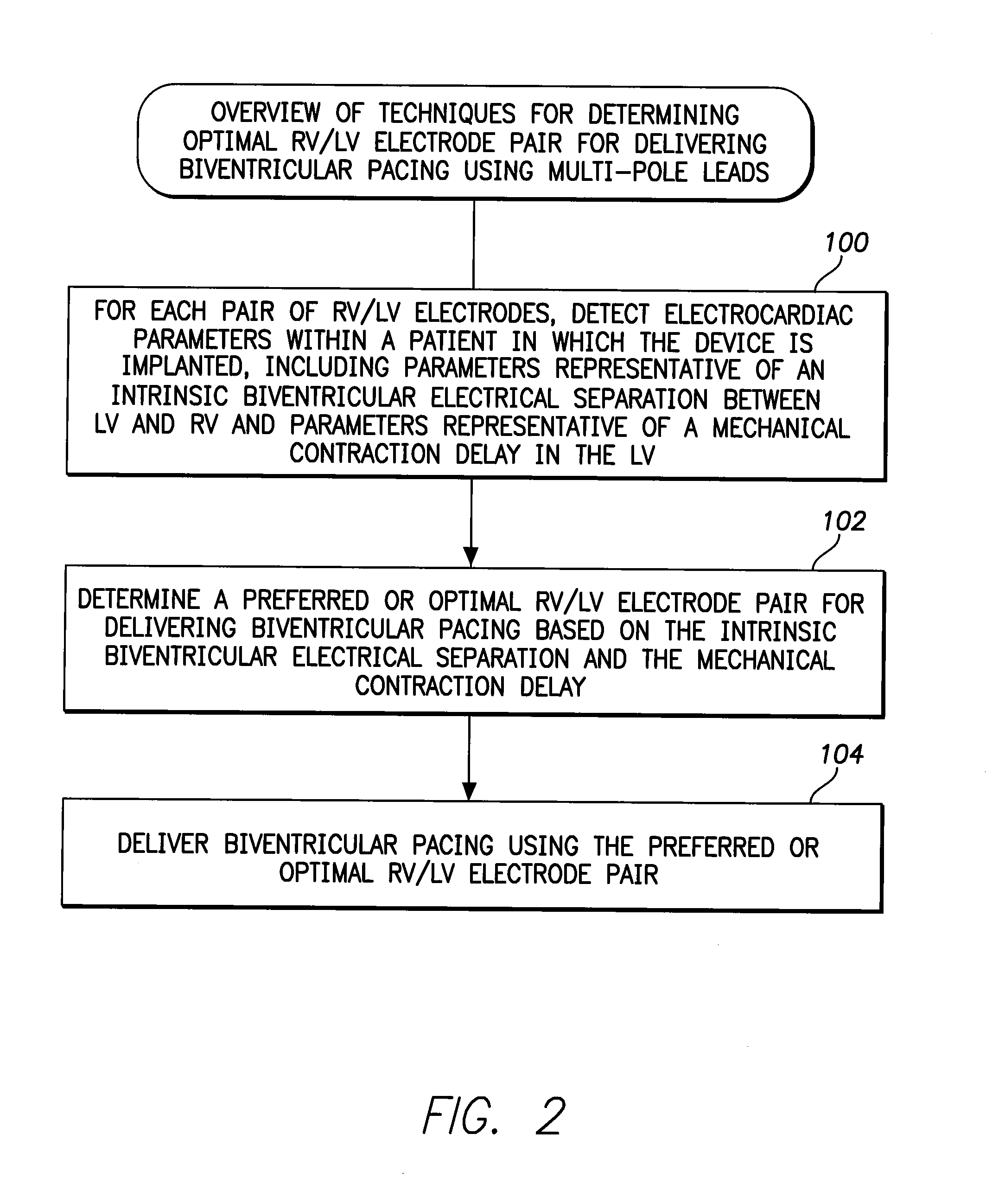Sytems and methods for determining optimal electrode pairs for use in biventricular pacing using multi-pole ventricular leads
a multi-pole ventricular lead and electrode pair technology, applied in the direction of electrotherapy, heart stimulators, therapy, etc., can solve the problem that the benefits may not las
- Summary
- Abstract
- Description
- Claims
- Application Information
AI Technical Summary
Benefits of technology
Problems solved by technology
Method used
Image
Examples
Embodiment Construction
[0026]The following description includes the best mode presently contemplated for practicing the invention. This description is not to be taken in a limiting sense but is made merely to describe general principles of the invention. The scope of the invention should be ascertained with reference to the issued claims. In the description of the invention that follows, like numerals or reference designators will be used to refer to like parts or elements throughout.
Overview of Implantable System
[0027]FIG. 1 illustrates an implantable medical system 8 capable of determining preferred or optimal RV / LV electrode pairs. The medical system 8 includes a pacer / ICD 10 or other cardiac rhythm management device equipped with one or more cardiac sensing / pacing leads 12 implanted on or within the heart of the patient, including a multi-pole LV lead implanted via the coronary sinus (CS). In FIG. 1, a stylized representation of the set of leads is provided. To illustrate the multi-pole configuration ...
PUM
 Login to View More
Login to View More Abstract
Description
Claims
Application Information
 Login to View More
Login to View More - R&D
- Intellectual Property
- Life Sciences
- Materials
- Tech Scout
- Unparalleled Data Quality
- Higher Quality Content
- 60% Fewer Hallucinations
Browse by: Latest US Patents, China's latest patents, Technical Efficacy Thesaurus, Application Domain, Technology Topic, Popular Technical Reports.
© 2025 PatSnap. All rights reserved.Legal|Privacy policy|Modern Slavery Act Transparency Statement|Sitemap|About US| Contact US: help@patsnap.com



